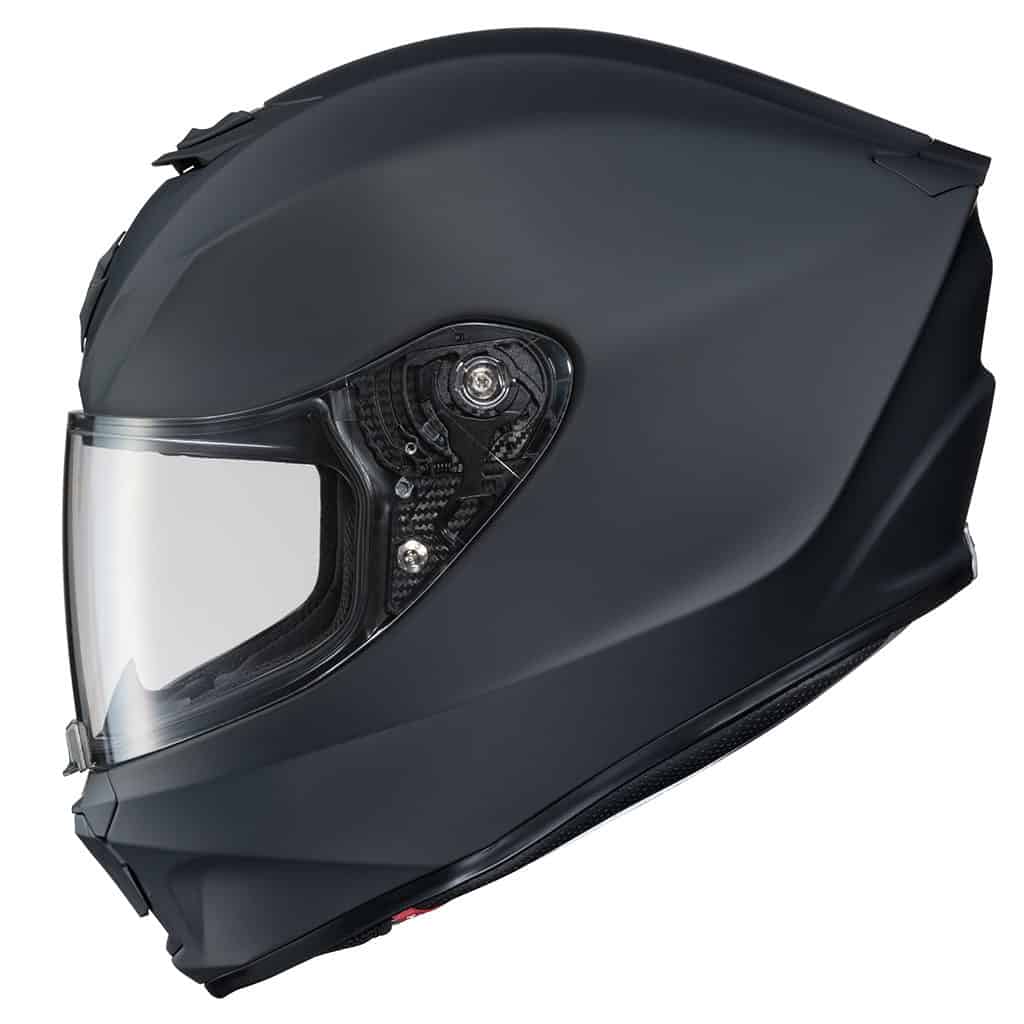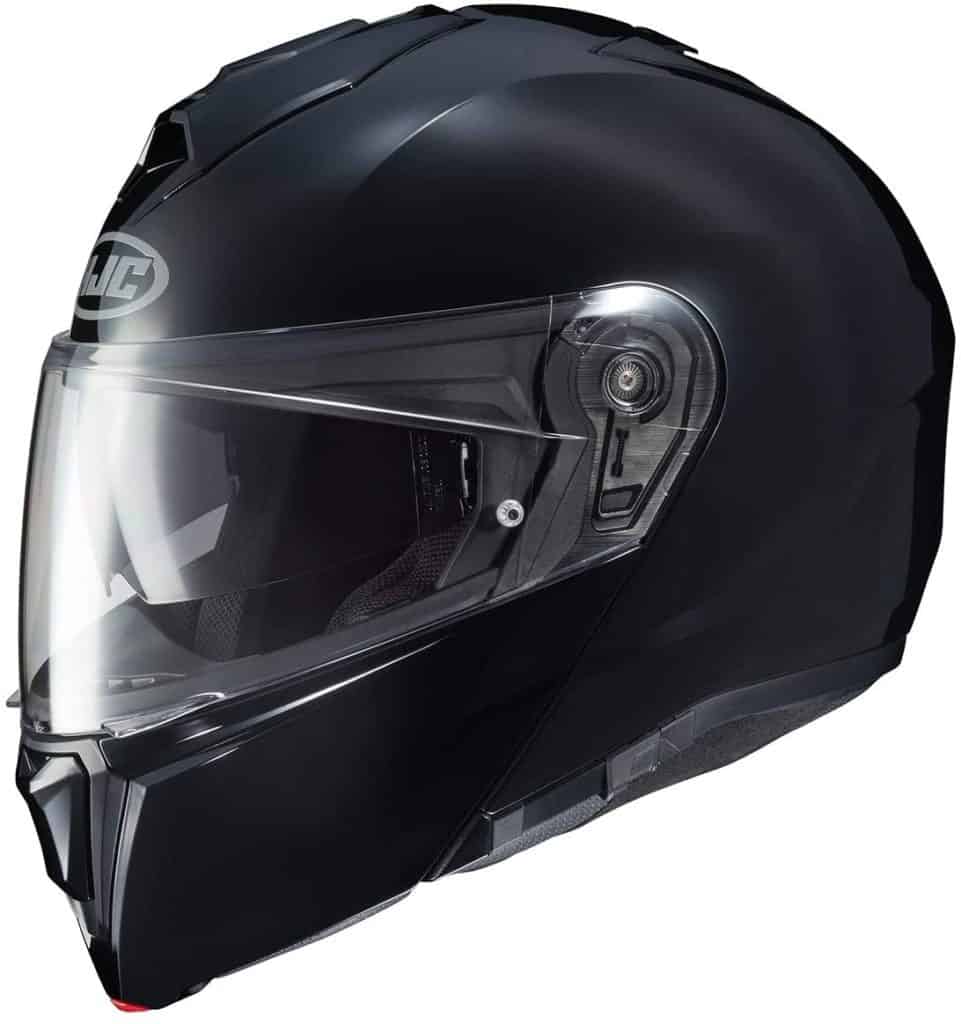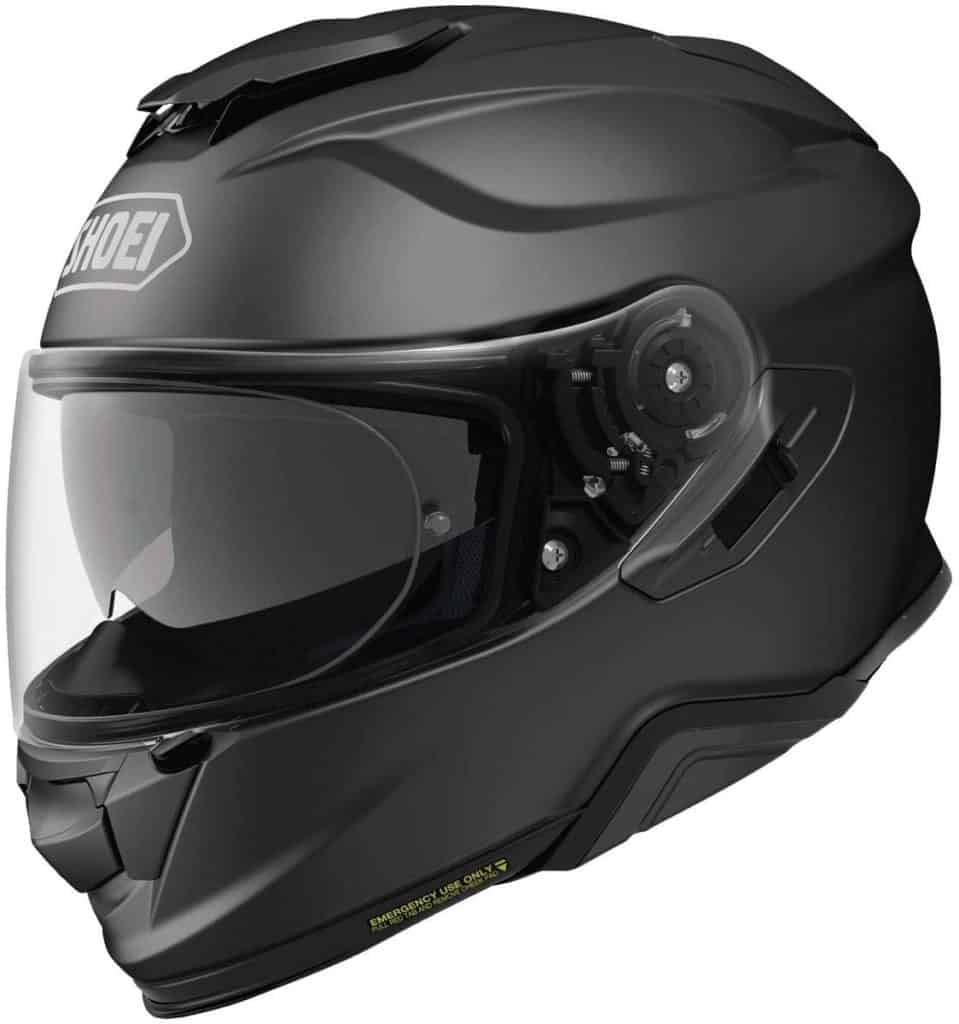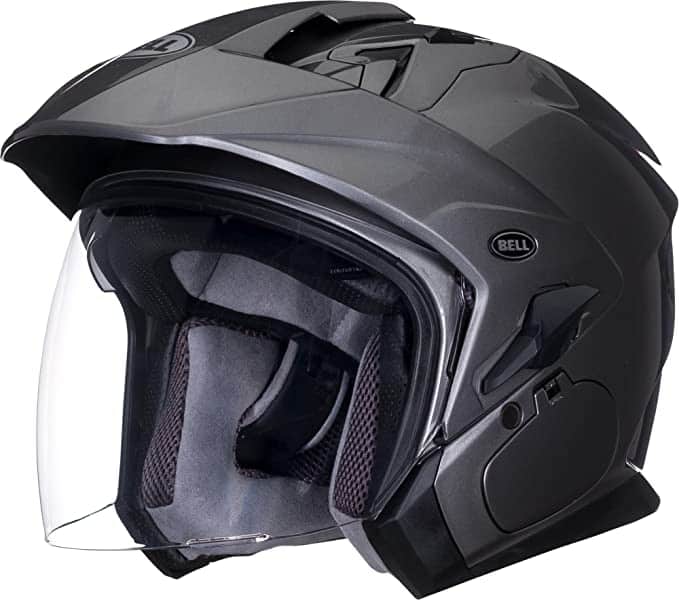If you wear glasses, choosing the best motorcycle helmet can be a daunting task. There are so many different helmets on the market, and all of them promise to be the best. But which one is really the best for people who wear glasses? In this post, we’ll take a look at some of the best motorcycle helmets for people who wear glasses, and we’ll help you choose the right one for you. Stay safe on your next ride with one of these helmets!
Best Motorcycle Helmets for Glasses Wearers
- Scorpion EXO-R420: top pick overall
- LS2 Stream: top budget pick
- HJC i90: top pick for modular helmet
- Shoei GT Air II: top pick for full-face helmet
- Bell Mag 9 Sena Helmet: top pick for open-face helmet
Table of Contents
Scorpion EXO-R420
- Competitive price
- Anti-fogging
- 100% UV protected face shield
- Plenty of ventilation
- Aerodynamic helmet
An incredible spec of a full-face bike helmet, the Scorpion EXO-R420 boasts a SNELL-approved LG polycarbonate shell to keep you safe on the road or the track.
The face shield is made with aerodynamic Ellip-Tec and has a secure feel without being too restrictive. The emergency release system on the cheek pads is seamless and can even be washed at the end of a warm summer ride.
The anti-fogging technology from the 100% UV-protected face shield is music to the ears of all glasses wearers. Plus, it has an optically clear, anti-scratch hardened coating and glasses will not get in the way of the drop-down visor.
Worried about ventilation? Don’t be – this helmet is complemented by an aero-tuned ventilation system, and a large top vent to keep things nice and cool no matter what the weather is doing. Despite the abundance of ventilation, you’ll notice that it still manages to reduce noise.
Of course, it has the all-important speaker pockets and two shell sizes XS-MD and LG-3XL to ensure glasses wearers can find the perfect fit that never pinches.
LS2 Stream
- Polycarbonate full-face helmet
- Glasses grooves on the side
- Appealing price
- Dropdown sun visor
- Micrometric fastener
The LS2 Stream is an excellent budget helmet from Chinese producer LS2. Ideal for the cruisers of the world, it offers an array of features and benefits to glasses wearers. The drop-down sun visor, for example, makes it easy to ride without having to stop and switch to shades every time the sun comes out.
When it comes to safety, the quick-fasten micrometric strap is convenient and the sun visor is handy, but what else? Well, it has a high safety rating from SHARP, and the optically correct main visor is lockable.
The LS2 Stream is only available in one shell size, but there is plenty of shock-absorbing lining for most riders. As glasses wearers know, ventilation is vital for keeping the visor free from the fog on cold days. The LS2 Stream has a single chin vent operated with a toggle switch that is easy to operate even with thick gloves, and two forehead vents. These sliders are easy to use, making airflow simple on this helmet. Just be sure to use a pin-lock on a rainy day as this can impact the visibility.
Moving onto the sun visor that is operated by a clever to the left of the visor pivot. Most owners will find the sun visor of the LS2 Stream to be sufficient, although some may find it doesn’t come down low enough, leaving a stripe of light at the bottom. The sun visor is just the right amount of dark and sits away from the face so it doesn’t rub the cheeks, leaving enough room for glasses.
In terms of appearance, this is a modern crash helmet that has plenty going for it, and to keep it hygienic, the interior lining can be removed and washed and is comfier than the price tag might suggest. To top it all off, there are glasses grooves on the side to prevent the stems from digging into the rider’s face.
HJC i90
- Polycarbonate modular helmet
- Dropdown sun visor
- Bluetooth ready
- Glasses groove
- Included pinlock antifog
The best modular helmet for glasses wearers is the HJC i90 – replacing the brand’s old IS-Max II. It performs well in terms of safety and has a modern look, but the features are great for anyone looking for a front-flip option with a pinlock used for anti-fogging capabilities included.
Great for sit-up style riding, the HJC i90 has a glasses groove to add to the comfort of glasses wearers, plus an antibacterial and wicking liner for comfort, and a wide visor aperture to give you enhanced peripheral vision on the road.
Bluetooth integration may appeal to those who take their bike out regularly and the anti-fog lens included is also a welcome addition. This allows for better visibility in all conditions, giving the rider peace of mind.
The i90 is available in 3 sizes, a good number for low-mid priced helmets such as this one, allowing you to pick a helmet that is a better fit for improved comfort and safety.
Shoei GT Air II
- Bluetooth integration
- Improved ventilation
- Longer drop-down sun visor
- Eyeglass compatible interior
- Molded air spoiler
A high-end helmet commands a high-end price, but the Shoei GT Air II certainly earns it. Full of features, its shell design has been tweaked but still offers stability and it has been through extensive wind tunnel testing making sure it is aerodynamic via the response of professional riders.
With improved ventilation, it has a longer QSV-2 drop-down sun visor, providing 5mm more coverage and more relief from the sun.
A micro ratchet chin strap integrated with the SRL 2 Bluetooth system by Sena makes it easy to install. The visor meets the high standards required for non-prescription eyeglasses and its distortion-free shield blocks 99% of harmful rays, for increased comfort for anyone who wears glasses.
Ventilation is excellent with the Shoei GT Air II. This is via the 3 intake and six exhaust vents allowing optimal airflow, especially via the enlarged intake vent that reduces shield fogging.
Combine this with the eyeglass-compatible interior, chin curtain to stop wind entry and reduce noise, and molded air spoiler to reduce drag and lift, and this is a high-spec full race helmet.
Bell Mag 9 Sena
- All in one design
- Available in two shell sizes
- multiple configuration options
- Sena SMH10 Bluetooth stereo headset compatible
- Plenty of ventilation
With the perfect blend between comfort and functionality, the Bell Mag 9 Sena Helmet is an open face option, ideal for glasses wearers.
For the open face tourer, it has a clear face shield and an internal drop-down sun visor. Like many modern helmets, it is compatible with the Sena SMH10 Bluetooth Stereo Headset.
Riders who want to get on and get going will appreciate the all-in-one design, and it takes a lot of the strain away from having to adjust multiple face shields and sunglasses.
It is available in two polycarbonate shell sizes to ensure you get the optimal fit. Also, the Bell Mag 9 can be used with or without the shield or visor making it versatile for different tastes and needs, and velocity flow ventilation makes it an incredibly well-ventilated helmet within the category.
There is plenty of room to accommodate glasses, and contour cheek pads ensure it fits well and adds to the comfort.
How to Wear Glasses with a Motorcycle Helmet
There are two types of glasses that people wear with a motorcycle helmet. The first and most necessary are the prescription glasses that are used for correcting vision.
Therefore, a rider cannot do without these. The latter are sunglasses or transition glasses that are used for warding off sunlight and having uninterrupted vision. To wear prescription glasses, some riders would first wear the glasses and then wear the helmet over them.
The problem that arises with this method is that the bridge of the glasses rests on the nose, and the temples resting on the back of the ears- both are prone to movement whenever the helmet moves. For example during speed variation, if the helmet moves, the glasses move. This can be dangerous for a rider as it disrupts their vision momentarily.

Therefore, some riders remove the padding (which has its risks) to allow the glasses to rest free and independent of the helmet. Glasses that have straight and thin arms are better and more comfortable than those with thick arms or those that bend behind the ear.
The latter type would be difficult to get inside your helmet and can also cause a headache on long trips. There are brands that design sunglasses as prescription glasses as well, easy to wear inside the helmet.
Coming to the type of helmet, a helmet’s temples must have cutouts to fit glasses. That is the first thing to look for while buying a motorcycle helmet.
And quite obviously, open-faced or flip-up helmets are easier to pair with glasses than the full-faced varieties. Also, if a rider is wearing glasses with a full-face helmet, they may carry the risk of breaking their glasses if they don’t do it right.
To prevent that, they first need to remove the shield from their helmet. Then, they have to put on their glasses and rest them on their forehead. Then they need to take the helmet, and slowly slide it over their glasses, in a manner such that the glasses fall over their eyes and the helmet slides on their face.
Things to have in mind before Buying a Helmet
Shell size and shape
This is the first and foremost step in determining the right type of helmet for your head. The size and shape of the head vary amongst individuals, some have a rounder head while some may have a longer head.
Once the type of helmet that pairs well with the shape of your head is found, it is crucial to select the right size of helmet. To determine the size, measure your head by placing a measuring tape above the fullest part of your head, the area about ½ inch above your eyebrows and ears.
Check the corresponding size with the brand of your choice and then make your purchase. To make sure the helmet fits well, perform these small tests.
- Turn your head from side to side. This is to check whether the pressure exerted by the helmet is constant on all sides of the head. If it is uneven, then this may not be the right helmet for you.
- Roll your head in front. If the helmet is fastened around your chin, it shouldn’t fall off your head.
- If you notice red spots or you find your head is sore after removing the helmet, go for a bigger size.
Type and Fit of Strap
The padding of the interior of the helmet should not be too loose nor too tight on your face. It should fit enough that the helmet exerts even pressure over your whole face and not just on one point. After some use, the padding may break loose and fit the shape of your head gradually.
However, if it slackens too much, enough that the helmet moves when you move your head from side to side, it means your helmet needs to be changed. Also, the helmet’s interior should be made of a fabric that is resistant to germs and doesn’t irritate your skin.
The liners should be removable and washable. If your helmet comes with a chin curtain and breath guard, it offers extra protection from dust and smites, while maintaining the direction of airflow of your breath to the visor to prevent fogging.
The three types of straps that help in fastening your helmet are:
- Quick Release strap- it works like how a seatbelt is worn, one end of the helmet is buckled into the other end.
- Micrometric buckle- it has a toothed strip on one end of the strap, which goes and fits snugly into the other end with a spring ratchet.
- Double D ring- it is probably the oldest but safest way of strapping your helmet as it is simple in design and offers the maximum adjustment for strapping on the helmet.
Type of view and ventilation
Depending upon the type of rider, the view also varies. Most riders need a basic peripheral view when the helmet rests upon their head.
For track use, riders need a wider view to see better when they are ducked behind the windscreen. A good visor is scratch-resistant, dust-resistant, and UV resistant to ensure a clear view.
The screen should also be sealed tight to avoid water drainages inside. The screen should be tinted for use during the day but should be able to be replaced easily by a clear screen during the night. To flush out humidity and prevent fog, the helmet needs to have ventilation points that expel air in the right direction.
Safety
Any helmet you are considering buying should meet the safety standards laid out by DOT (US standard), ECE (Europe), SNELL, or SHARP. SNELL is the gold standard for helmet safety.
Color
Although the visual characteristics of a helmet such as its color least matter for safety, it is always better to go for lighter colors that can be reflected off and viewed even during pitch darkness.
Open Face or Full Face?
There are riders of all ages wearing both types of helmets. To answer the question as to which type is better, open-faced, or full-face, let’s look at both the advantages and disadvantages of both types.
While the open-faced helmets allow the rider to look and feel cool, communicate easily to passersby, hear important sounds such as tire inflations and give a broader and clearer field of view to the rider without any blind spots, it does not fulfill an essential need of the helmet- it doesn’t give protection to the face and chin.
It also requires sunglasses and a mask to be worn to protect the rider from dust. On the contrary, a full-face helmet gives the rider complete protection, while also hiding their identity.
However, those who wear a full-face helmet may find the experience claustrophobic at times because the helmet allows no space and limited air to pass through in and out. Also, the vision of the rider becomes limited and he cannot view blind spots easily.
The rider is also unable to communicate without taking off the helmet and cannot hear important mechanical sounds that may indicate emergencies.
Depending upon what you require most, considering the advantages and disadvantages listed above, you can choose which helmet is better. A full face helmet is definitely better as per the safety point of view.
How to Prevent The Helmet From Fogging Up?
Most helmets in the market these days are equipped with vents and airflow technology that prevents the visor and screen from fogging up. However, if your helmet still has fogged up during winters, rainfalls or even summers, you can follow the steps below:
- Provide adequate ventilation: If there are no vents in your helmet, just slightly open up the visor to allow ventilation. You can also use an adhesive at the bottom front aperture of the rim to prevent the visor from closing due to the wind pressure at high speeds. You can also remove the chin curtain to allow for some ventilation.
- Check if your motorcycle helmet comes with anti-fog visor inserts. If not, use plastic pins, that can be used in pin-lock-ready helmets to seal a bubble of air and keep the visor clear.
- Anti-fog masks: You can purchase genuine anti-fog masks that have a ‘breather’ to direct the flow of air down and prevent fogging.
- Visor cleaner: Keeping your visor clean is essential to avoid fogging up. Using the right visor cleaners made of wax or silicon with anti-fog properties can prevent the fogging up of your visor. A similar treatment is useful to apply on your sunglasses or prescription glasses if you wear them while riding, to prevent the fogging up of the glasses.
FAQ
Can you wear glasses with a helmet?
Yes, you can definitely wear glasses with a helmet. You just need to be careful of the selection of the correct glasses and correct helmet to ensure a smooth, riding experience.
What is the best helmet for a cruiser?
Open face helmets that leave your face open and cover the head and back part of your head are the best type for a cruiser bike. This is because the face is exposed to feel the wind and air while cruising.
How tight should a motorcycle helmet be?
A motorcycle helmet shouldn’t be too tight or too loose. When you turn your head from one side to another side, it shouldn’t slide to one side. When you roll your head forward, it should stay fixed and not come off the head. It shouldn’t be too tight or press on a particular area of your head or ears because that can lead to a headache on a long trip. The pressure exerted by the helmet should be uniform on all areas of the head.
Which helmet is better- open face or full face?
A full face helmet is better in terms of the safety it gives to the rider. It covers the face as well as the chin and is a better bet in saving your life after a powerful collision than an open face helmet.
How do you wear goggles with a helmet?
By choosing closed goggles with light and thin arms that don’t bend around your ear, and choosing a lightweight helmet that doesn’t press on your goggles, you can safely and comfortably wear a helmet with goggles.
How do you know if a helmet fits?
By performing side to side movement of the head, and moving forwards and checking if the helmet topples off, one can determine the fit of the helmet. Also, post wearing a helmet, one shouldn’t develop soreness, if they do, they need to get a bigger sized helmet.
Final Thoughts
Whether the sun is out or there’s cloud overhead, or you only wear your glasses at certain times, don’t leave home without the right helmet to keep you safe. We’ve compiled a list of the best motorcycle helmets for glasses wearers so you can ride in comfort, and with the reassurance that you are safe on the road.
Top Motorcycle Helmets for Glasses Wearers
- Scorpion EXO-R420: top pick overall
- LS2 Stream: top budget pick
- HJC i90: top pick for modular helmet
- Shoei GT Air II: top pick for full-face helmet
- Bell Mag 9 Sena Helmet: top pick for open-face helmet





